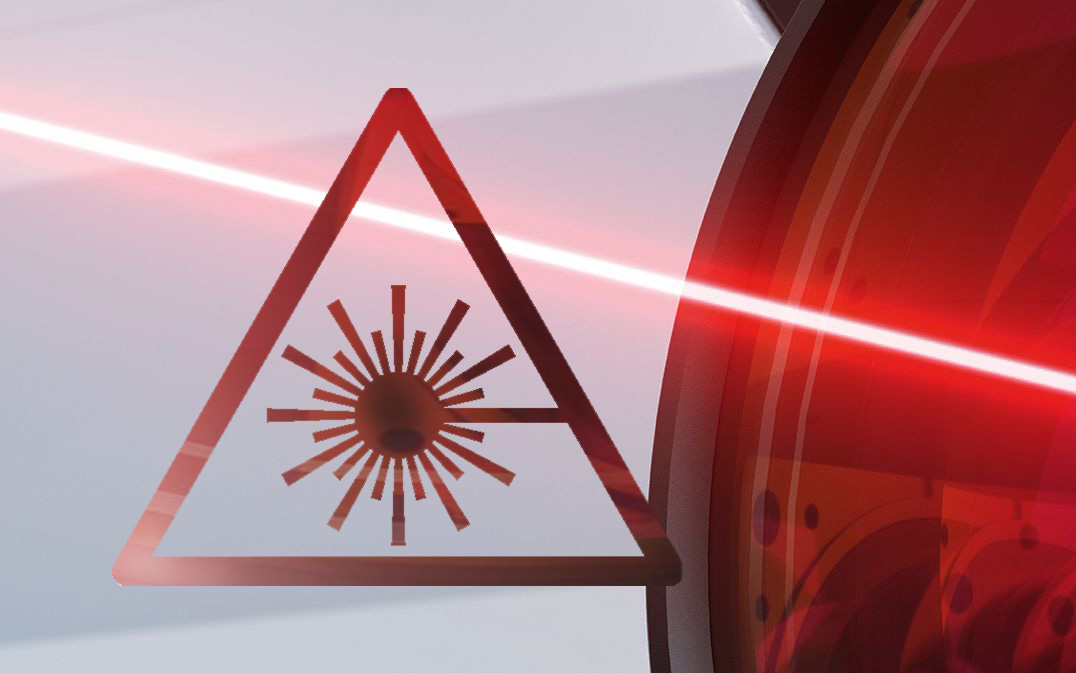Safety in laser machining 2020-10-07
to overviewIf you deal with laser processing, sooner or later you will be confronted with certain laws, guidelines and standards. Since a laser can pose a hazard depending on its power, the measures described therein ensure reliable operation. The requirements are aimed at both manufacturers and users with the aim of informing about potential dangers and minimising risks.
As a starting point, the manufacturer must first classify his laser product. The classification is based on the different degrees of danger caused by the laser radiation - increasing from class 1 to class 4. The classes are based on the accessible radiation and its effects on eyes and skin in case of contact with the laser beam as well as indirect factors such as fire and explosion hazard. Depending on the laser class, appropriate protective measures are then derived.
The laser class of VLaser 370 - technical protective measures
Despite the use of a category 4 high-power laser in the VLaser 370, the machine is classified as a category 1 machine in normal operation. This means that it is a safe laser machine without a hazardous area. The reason for this is that the laser radiation in normal operation as intended is completely shielded from the outside by the built-in safety precautions. The protective housing and the laser protection glass ensure that no radiation can reach the user from inside. An extraction system removes vapours and dust. The machine door also has a safety interlock which prevents the door from being opened during processing. The use of the VLaser 370 at your site therefore does not require any elaborate protective measures due to the enclosed laser and safety precautions. Separate rooms and the wearing of protective clothing are not necessary.
While there is no danger during normal operation, it may be necessary to open the laser enclosure during repair work or service. In this scenario, a higher laser class applies, which is associated with an increased risk and the necessary protective measures. The protective housing may only be removed by qualified personnel using special tools, taking special protective measures into account. However, if the service work is carried out by VOLLMER, we shall be responsible for laser protection during on-site work.
Organisational recommendations
In addition to the technical measures which guarantee the safe operation of a laser machine, supplementary organisational protective measures are recommended and should be considered. Although the appointment of a laser safety officer at your company is not mandatory for the VLaser 370, the employee will acquire a certain level of expertise in this subject through training. He or she can advise on safe use, carry out risk assessments and instructions, prepare appropriate work instructions and check functions.
Safety-conscious working plays an important role in all areas, in all departments and when using any machine. Laser processing is no exception. Even if standards and regulations may seem more complex at first glance, in the case of the VLaser 370 this is a simple matter. However, our team will be happy to assist you with advice and support if you are interested in a VLaser 370.
